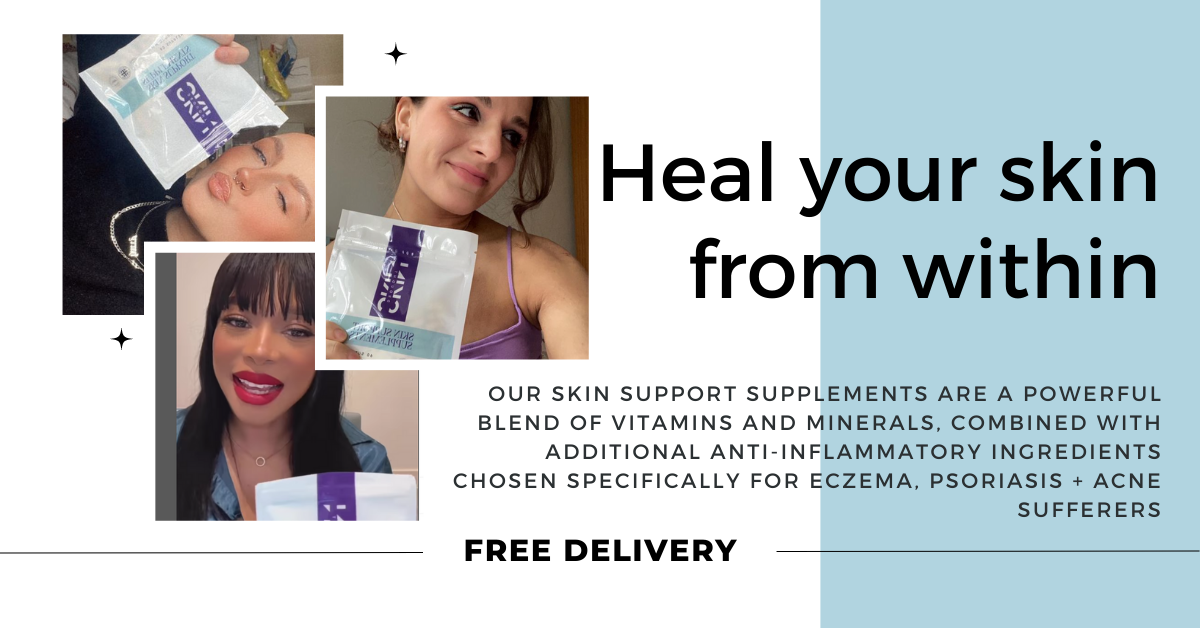Eczema Sun Cream: Tips and Tricks for Safe Sun Protection
If you have eczema, you will already know now how important it is to protect your skin from irritants and triggers. Sun exposure can be one of the triggers for eczema flare-ups, so it's important to choose the right sun cream to keep your skin safe. Learn about the best types of eczema sun cream and how to use them effectively in this article.
Understand the Importance of Sun Protection for Eczema
Using an SPF is your insurance against pigmentation and signs of premature aging. It can also help prevent sagging skin and skin cancer. There is no such thing as safe tanning- the sun causes negative skin processes and inflammation.
Sun exposure can be a trigger for eczema flare-ups, causing redness, itching, and irritation. It's important to protect your skin from the sun's harmful rays to prevent these symptoms. Sunburn can also make eczema symptoms worse, so using the right sun cream is essential. Make sure to choose a sun cream with a high SPF and broad-spectrum protection to keep your skin safe.
Sunburn is extensive skin damage, which causes harm at the DNA level, whilst increasing skin cancer risk. This damage appears as wrinkles, discolouration, and sagging skin. Sunburn in youth can even affect your skin later in life. If you have harmed your skin in the past through overexposure to the sun, you should be extra vigilant about sun protection, whilst maintaining a healthy diet and good skincare routine to help repair the damage. The best skin-repairing foods are those containing antioxidants, particularly beta-carotene, and lycopene. These can be found in melons, tomatoes, mango, and carrots. Unfortunately, a great diet will never completely undo sun damage or replace sun protection.
Choose the Right Eczema Sun Cream
When it comes to choosing a sunscreen for eczema-prone skin, it's important to look for products that are specifically designed for sensitive skin. Look for a sun cream made for eczema-prone skin when shopping for sun cream. These products are formulated to be gentle and non-irritating and often contain ingredients that can help soothe and protect the skin.
Look for sunscreens that are fragrance-free, hypoallergenic, and non-comedogenic. It's also important to choose a sunscreen with a high SPF, at least 30 or higher, and broad-spectrum protection to protect against both UVA and UVB rays. SPF 30 is ideal for everyday use, whereas you’ll need SPF 50 while on holiday, or if you are spending all day in the sun. It needs to be worn every day, even in winter. Don't forget to reapply sunscreen every two hours, or more often if you're swimming or sweating.
Mineral-based sun creams are often a good choice for people with eczema-prone skin, as they are less likely to cause irritation. Look for products that contain zinc oxide or titanium dioxide, which are both effective at blocking UV rays. They work by creating a barrier on the skin, reflecting away the sun’s rays.
For eczema sufferers, it's extra important to keep your skin moisturised. Consider using a sun cream that also contains moisturising ingredients, such as aloe vera or glycerin.
Many people make the mistake of relying on make-up containing an SPF. This often doesn’t offer adequate protection, as not enough foundation is applied to offer thorough, all-over coverage. There are plenty of options that won’t ruin your make-up available. Apply before your foundation, or before your primer if you are using one.
Apply Sunscreen Properly and Frequently
Applying sunscreen properly and frequently is key to protecting your skin from the sun's harmful rays, especially if you have eczema. Be sure to apply sunscreen at least 15 minutes before going outside, and use enough to cover all exposed skin. Don't forget to apply sunscreen to your ears, neck, and the tops of your feet. Reapply sunscreen every two hours, or more often if you're swimming or sweating. And remember sunscreen is just one part of sun protection – be sure to wear protective clothing, seek shade, and avoid the sun during peak hours whenever possible.
Cover Up with Protective Clothing
In addition to using eczema sun cream, covering up with protective clothing is another important way to protect your skin from the sun. Look for clothing made from tightly woven fabrics that provide more protection from the sun's harmful rays. Long-sleeved shirts, floaty trousers, maxi skirts, and wide-brimmed hats are all great options for protecting your skin. Don't forget to also wear sunglasses to protect your eyes from UV rays. By combining eczema sun cream with protective clothing, you can enjoy the sun safely and without irritation.
Stay in the Shade and Avoid Peak Sun Hours
While using eczema-friendly sun cream and protective clothing is important, it's also a good idea to stay in the shade and avoid peak sun hours when possible. The sun's rays are strongest between 10 am and 4 pm, so try to plan outdoor activities for earlier or later in the day. If you do need to be outside during peak sun hours, seek out shade under trees, umbrellas, or other structures. This will help reduce your overall sun exposure and lower your risk of sunburn and skin damage.
Disclaimer: This article contains affiliate links. We earn a very small commission from each purchase made through these links. There is no additional cost to you. All products featured have been specifically selected as products we personally use and love. For further information, please see our disclaimer page.



